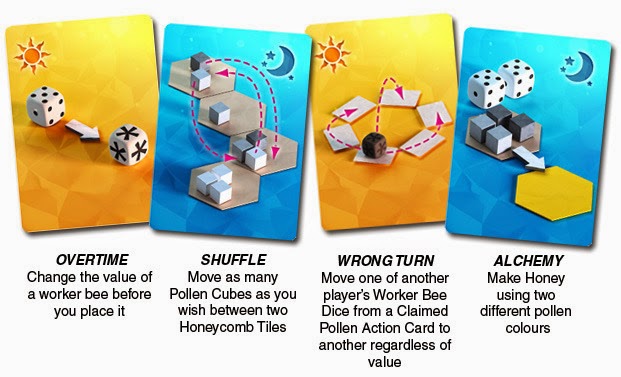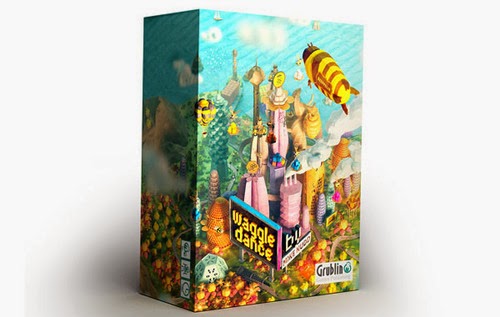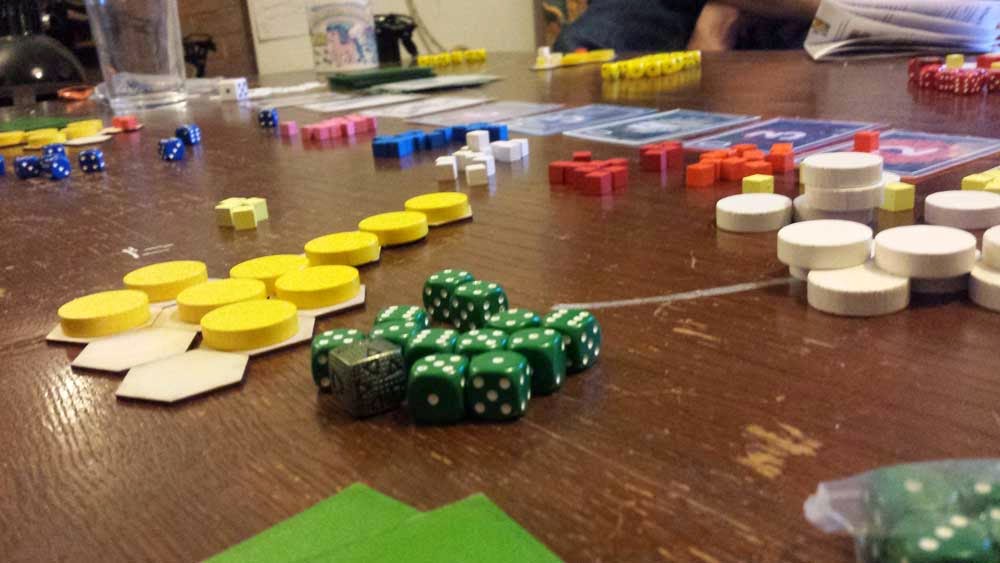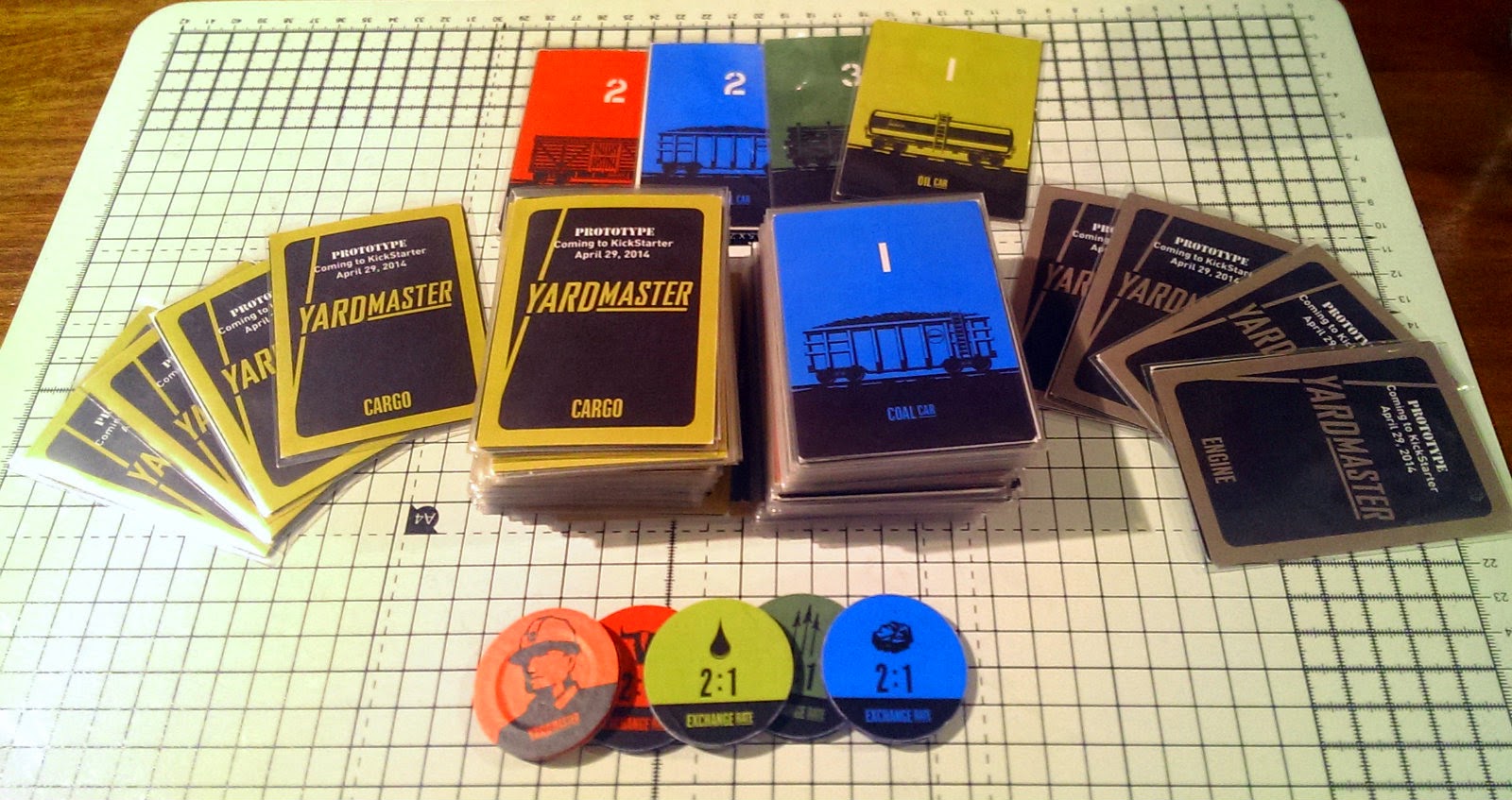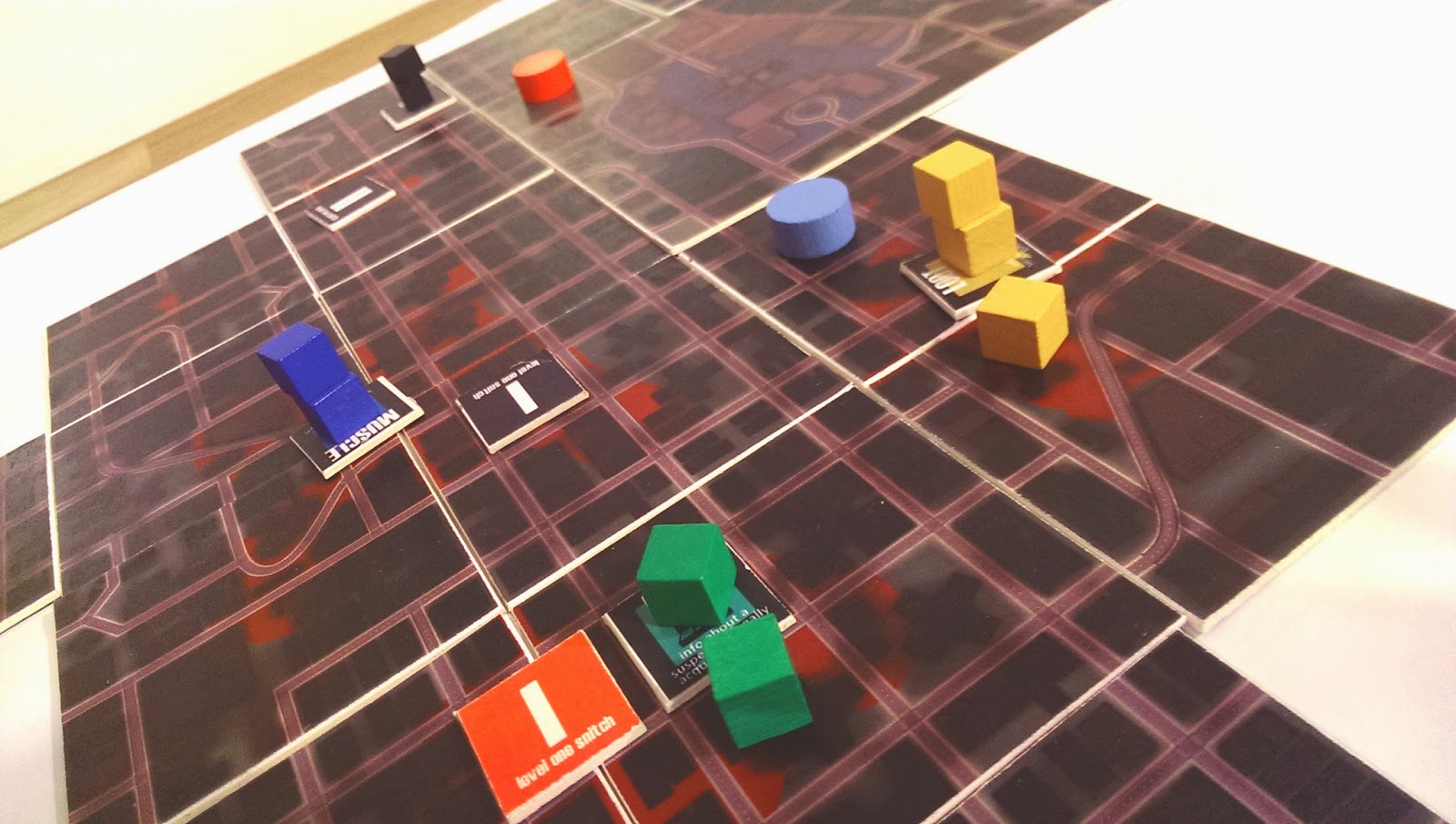Brave the Elements from Chaos Publishing
Is this the best kept secret that Kickstarter has at the moment? It quite possibly is!
This is not a good thing though, as with a mere 5 days to go to reach its funding goal it really looks unlikely (this time round at least). I really have to tell you that this is a crying shame. Brave the Elements is a fantastic card and at £20 represents excellent value (or £18 for our US cousins). In fact, there are pledge levels that cover pretty much the entire planet and each offering great value.
Brave the Elements is currently on Kickstarter seeking funding and with only 5 days to go, looks unlikely to fund. Of course, there is still time to turn the campaign around, but it will take a great deal of hard work.
But why the lack of interest? Chaos Publishing had a presence at the UK Games Expo, so I am sure it is not through lack of trying on the part of the designer Miles Ratcliffe. Perhaps it is due to the huge glut of games that are currently appearing each week on Kickstarter. According to a recent post by Henry Jasper of Grublin Games there has been 98 new games in the last two weeks alone.
So why does Brave the Elements and Chaos Publishing deserve your support? Spare me a few moments and I will at tell you, or at least give you some information to help you decide.
What do you get for your money?
 |
| Components |
- 108 Cards:56 Locations, 46 Disaster Cards, 4 Reference Cards, 1 Round Tracker, 1 Start Player Card
- 62 Tokens/Markers: 25 Victory Point Tokens, 20 Element Tokens, 10 Runestones, 6 Element Markers, 1 Time Marker
- 3 Dice: 2 Custom Defence, 1 Energy Die
- 16 Custom Meeples: 4 per player
Oh, and did I say shipping was included!
I think this does represent value for money, not an amazing, fantastic, bury your fledgling company in debt value, but certainly a fair and competitive price.
Artwork
Now, I have been playing with a prototype copy of the game for last week or so, so I have not seen first hand the artwork that is to be used. However, there are plenty of examples of it on Kickstarter and I will share some of these with you now. The artist Jordan Grimmer has done a simply marvellous job.
 |
| Picture Courtesy of Chaos Publishing |
 |
| Picture Courtesy of Chaos Publishing |
 |
| Card Art Courtesy of Chaos Publishing |
They really do convey the essence of the game, the gorgeous structures you build and the fantastic power you unleash against your opponents to destroy their buildings.
Gameplay
"A strategic resource management game for 2-4 players. Control the forces of nature, prevent disasters and prove your elemental mastery!"
The game places each player in charge of civilisation trying to prove itself and its master of the four basic elements (earth, fire, wind and water). Throughout the game you will construct building which will help you harness the power of the elements and / or increase the power of any disasters your conjure against your opponents.
The game is played out over a number of rounds, normally between 6 and 8. Each round is split into 6 phases to the game. Each player will complete the phase in order and then move onto the next phase.
1. Draw cards
Each player will draw up to six cards. These cards are used to perform actions, conjure disasters, or help protect against disasters conjured against them.
2. Construct
Each player will choose one of the available buildings to construct and place it in their city. Each player can have a 5 buildings and each will provide some sort of benefit to the owner.
3. Take an action
Using the cards drawn in step 1, each player will play a card(s) from their hand. These cards will have provide the player with instructions on what they can use the card for; conjuring additional disasters, drawing cards and taking extra actions, etc.
4. Infiltrate
Each player also has four available followers who they can use to infiltrate their opponents' buildings. Success or failure is based on a dice roll (1-6) vs. the strength of the building they are infiltrating. If successful, the building is captured and removed from the game. If the attempt fails, the follower stays on the building and will provide a bonus against future attempts (or disasters conjured against the building).
5. Conjure Disasters
Using the cards from step 1 each player can also elect to conjure a disaster. You pit the value of the disaster against the strength of the target building (and applying any modifiers). If the value of the disaster is higher than the buildings strength then the disaster comes into effect. You can also use other cards in your hand to support disasters from the same element group (this will increase the potency of the disaster, helping you attack better defended building).
Defence against the disasters is possible and disaster tells you what elements are required to defend against it. To defend you roll the defence dice and match the symbols, but can also use building modifiers that you might have, or use the element cards from your hand too.
6. Collect Victory Points
Finally, victory points are collected for the number of buildings you end the round with. 4 buildings = 1 VP, 5 buildings = 3 VP.
At the end of the game, the winner is the person who has collected the most Victory Points.
Thoughts
I really like the hand management element in this game. Your cards, of which there is no hand limit, are used for almost everything. They dictate what actions you can take, the disasters you will conjure and the how effectively you defend against actions/disasters played against you. What makes this really interesting is as the first player, you could you go all out against your opponent, fail miserably, through their defence and leave yourself wide open to the counter attack as your opponent will know exactly what number of cards you have left when they come to their turn and attempt to bring your city to its knees.
Initially I was uncertain how I felt about the infiltration and disaster mechanic, as it seemed I was attempting to do the same action, but employ a different method to do it. The end result of infiltration and conjuring is the same; your opponent loses a building and you place it face down in front of you. However, the more I played, the more I appreciated the subtly difference of these actions.
Of course, where this dice there is luck. And this game can hinge a little too much on good / bad dice rolls. However, with the infiltration action workers stay on the target location if they don't succeed at the first attempt and help weaken the structure and make future infiltration attempts easier. Against disasters, again dice rolling comes in to play, but a carefully managed hand will allow the defender to use their cards as a backup should the dice not roll in their favour.
Another aspect of conjuring disasters and defending against them that I think works exceptionally well is the fact that the stronger the disaster, the easier it is to defend against. Weaker disasters may offer no defence dice rolls, meaning the defence is entirely from the cards you have in your hand. Stronger disaster may allow the defender to roll two dice. This leads to some interesting decisions when conjuring; do you play a strong disaster and make it easier to defence, or play a weaker disaster and support it by playing additional cards from your hand. This of course means you have less cards to defend with and is especially important depending on where you are in the turn order and how many players you are playing with.
I would like to see more varied disaster cards I think. Artwork aside, each of the four elements had identical cards. So while there are 46 cards (including wild cards which can be used as any element), there are only a very limited number of types of cards (in terms of the actions they offer). I also found that we would exhaust the card deck very quickly due to the presence of cards such as "draw a card, take an action." In one turn, I drew 5 additional cards on top of the 5 drawn at the start of the round. That is almost a quarter of the available cards. In a four player game, without drawing an additional cards, you would most likely be exhausting the deck every other turn.
While this is not an out and out review, although it started to sound that way, I do think there is a lot of fun to be had with this game. My experience has been two player games and they were great. I can only imagine the mayhem (of the good kind) that would ensue in a four player game.
Brave the Elements is currently funding on Kickstarter, please take a look:
Follow me on twitter: @TheGamesHunter
Like me on Facebook: TGHOnline
Add me on Google+: Christopher Dickinson





